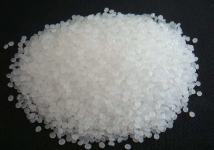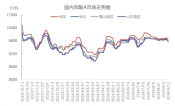read: 1033 time:2024-12-31 06:47:53 from:化易天下
How Will You Convert Phenol to 2,4,6-Tribromophenol? A Detailed Step-by-Step Guide
In organic chemistry, the conversion of phenol to 2,4,6-tribromophenol is a well-known reaction that demonstrates the principles of electrophilic aromatic substitution. This reaction is particularly significant in the chemical industry due to the applications of 2,4,6-tribromophenol as an intermediate in pharmaceuticals, dyes, and flame retardants. In this article, we will thoroughly explore the process and answer the key question: how will you convert phenol to 2,4,6-tribromophenol?
Phenol, also known as hydroxybenzene, is an aromatic compound with the molecular formula C6H5OH. Its hydroxyl group (-OH) is an activating group, making the benzene ring highly reactive towards electrophilic substitution reactions. This reactivity is crucial for the conversion to 2,4,6-tribromophenol, as the hydroxyl group directs the incoming electrophiles (in this case, bromine atoms) to specific positions on the ring.
The reaction of phenol with bromine leads to the formation of 2,4,6-tribromophenol. This process involves a series of electrophilic aromatic substitution reactions, where the bromine atoms substitute hydrogen atoms on the benzene ring. The hydroxyl group (-OH) is ortho-para directing, meaning it increases the electron density at the ortho (positions 2 and 6) and para (position 4) positions relative to itself. This results in bromination occurring preferentially at these positions.
1. Preparation of the Reactants: To begin the conversion of phenol to 2,4,6-tribromophenol, phenol is first dissolved in a suitable solvent such as water or glacial acetic acid. Bromine (Br2) is then added to this solution. Typically, the reaction is carried out at room temperature.
2. First Bromination: When bromine is added to the phenol solution, the first bromine atom is introduced at either the ortho or para position due to the activating effect of the hydroxyl group. Because the reaction is carried out under mild conditions, the para position (position 4) is usually brominated first.
3. Subsequent Brominations: The reaction continues with the introduction of additional bromine atoms. Due to the enhanced electron density at the ortho positions (positions 2 and 6), the remaining bromine atoms are substituted at these positions. The process yields 2,4,6-tribromophenol as the final product.
4. Product Isolation: After the reaction is complete, the 2,4,6-tribromophenol is separated from the reaction mixture. This is typically done by filtration if the product precipitates out of the solution or by extraction using a suitable organic solvent.
The formation of 2,4,6-tribromophenol from phenol is a clear example of how the positioning of substituents on an aromatic ring is influenced by directing groups. The hydroxyl group in phenol is a strong activator, which not only makes the benzene ring more reactive towards electrophiles but also ensures that these electrophiles attack the most electron-rich positions. Hence, in the question, how will you convert phenol to 2,4,6-tribromophenol, the answer lies in understanding these directing effects and the nature of bromination as an electrophilic aromatic substitution reaction.
2,4,6-Tribromophenol is not just an interesting compound in the realm of organic chemistry but also has practical applications. It serves as a precursor for the synthesis of other brominated organic compounds, which are used in industries ranging from pharmaceuticals to flame retardants. The ability to selectively brominate phenol at the 2,4,6 positions is therefore a valuable reaction in industrial chemistry.
In conclusion, to convert phenol to 2,4,6-tribromophenol, one must leverage the principles of electrophilic aromatic substitution, taking advantage of the directing effects of the hydroxyl group. This conversion, as demonstrated, is both straightforward and insightful, showcasing the elegance of chemical reactivity and functional group manipulation.

Jincheng Petrochemical's 300000 ton polypropylene plant successfully trial production, 2024 polypropylene market analysis

The ABS market remains sluggish, what is the future direction?

Market differentiation of bisphenol A intensifies: prices rise in East China, while prices generally decline in other regions

The production method and process flow of silicone acrylic lotion, and what are the common raw materials